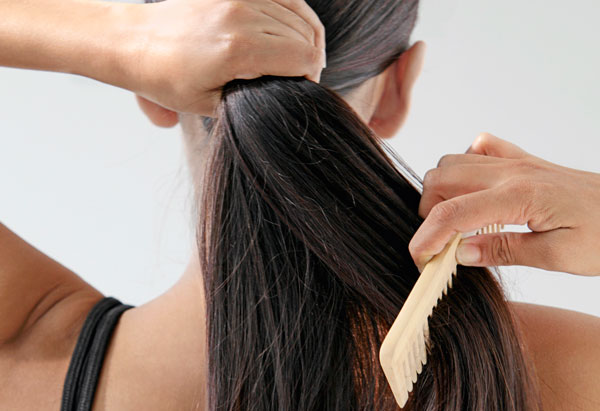The Straight Truth About Keratin and Other Hair Smoothing Treatments

Photo: Getty Images
Eight months after Oregon's Occupational Safety and Health Division (known as Oregon OSHA) released an alarming report about the levels of formaldehyde found in several salon hair-smoothing treatments, these frizz-fighting services are still widely available—and in demand. As the humidity starts to climb, here's what you should know before having any treatment that claims to leave your hair silky for months.
Fact: Formaldehyde is toxic.The chemical can cause immediate, short-term irritation of the eyes, skin, and upper respiratory tract. The longer-term risks of exposure are more troubling: The Environmental Protection Agency and federal OSHA classify formaldehyde as a suspected human carcinogen because of its links to nasal cancer and leukemia; the International Agency for Research on Cancer considers it a known human carcinogen. "I would not recommend use of any product containing formaldehyde," says Martyn Smith, PhD, a toxicologist at the University of California at Berkeley. "All products containing it should be banned."
Fact: Hair treatments are unregulated.
The Cosmetic Ingredient Review, a panel of scientists that recommends safety standards in cosmetics, advises that beauty products should contain no more than 0.2 percent formaldehyde (most nail polish manufacturers have removed formaldehyde from their formulas)—and that those products should not be aerosolized (as hair-smoothing treatments are). But since no health agency regulates ingredients in cosmetics, the onus is on manufacturers to introduce safe products, and sometimes they don't: When Oregon OSHA tested more than 100 samples of various salon hair-smoothing products (after receiving stylists' reports of breathing problems, nosebleeds, and eye irritation), they found some of the highest levels of formaldehyde—almost 12 percent—in a Brazilian Blowout formula that was labeled "formaldehyde-free." Numerous other products had formaldehyde concentrations of anywhere from 1 to 7 percent. The FDA says it's in the process of investigating Brazilian Blowout "and similar products."
Fact: It's unlikely these treatments could live up to their claims without formaldehyde.
Many companies say their product eradicates frizz (for up to five months) with only keratin, amino acids, or "proprietary conditioners." But none of these ingredients alone can keep hair frizz-free through multiple shampoos. That's why formulas also include ingredients (like methylene glycol or formalin) that become formaldehyde gas when heated or dried. After the hair is thoroughly saturated with one of these solutions, it's dried and flatironed; the process releases the formaldehyde, which bonds the conditioners to the hair so it remains smooth for months. Over time, the bonds dissolve and the hair's natural texture gradually returns. Several new salon services have launched this year that claim to be (really, truly!) formaldehyde-free; if this is the case, it's unclear how they will keep hair smooth for as long as they claim (at least six weeks, and up to four months).
Buyer Beware: Some at-home 30-day hair-smoothing kits (like Liquid Keratin and Organix Brazilian Keratin Therapy) use biformyl, also known as ethandial and glyoxal, to bond conditioners to the hair. This aldehyde is not classified as a carcinogen, but it has significant toxicological concerns, including skin, eye, and respiratory tract irritation.
The bottom line: The only way to guarantee that you're not getting a hair-smoothing treatment that could expose you to unacceptable levels of formaldehyde is...to not get the treatment.
See what the Oprah.com community is saying about keratin hair treatments
Caring for Your Hair



